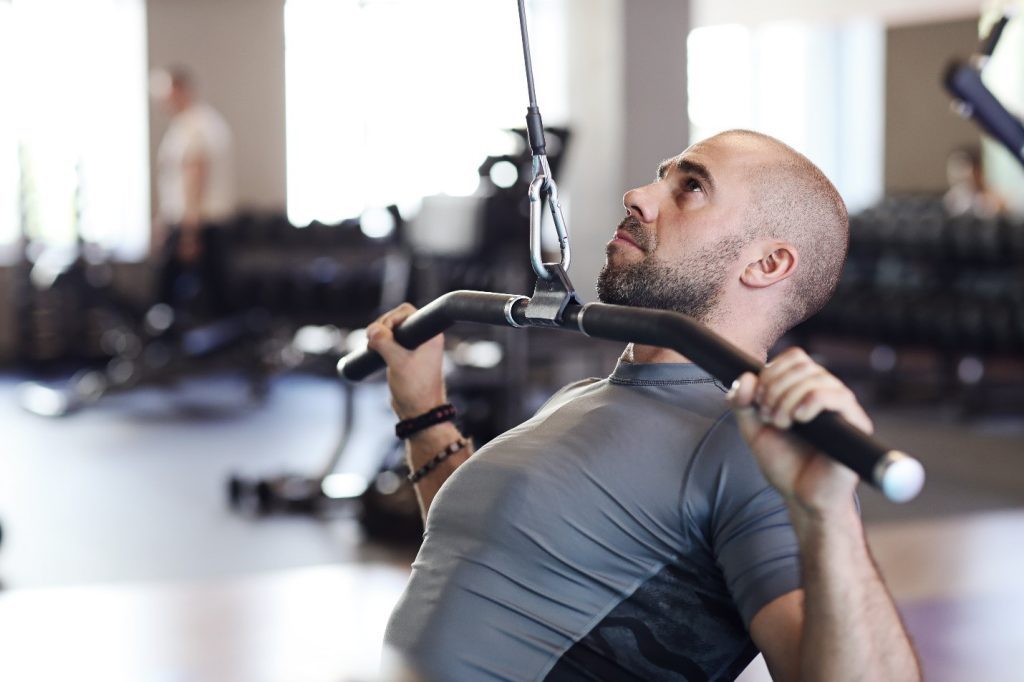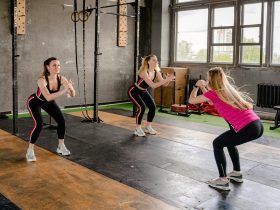Cable chest exercises might assist you gain chest growth.
Introduction:
Cable chest workouts are essential components of any thorough chest training plan because they offer a diverse and effective approach to targeting and developing the muscles in your chest. Including cable chest motions in your workout routine will help you gain muscular growth, enhance definition and increase physical endurance. In this detailed guide, we’ll go over the most important features, characteristics, and commonly asked questions about cable chest exercises giving you the information you need to boost your workouts and improve your chest growth.
Cable chest exercises have the following key features:
Muscle engagement is particularly targeted.
Link machines give explicit focusing of chest muscles, including the pectoralis major and minor, utilizing movements like link flies, hybrids, and link press variations.
Steady pressure
Link machines, in contrast to customary free loads, keep up with persistent strain across the entire scope of activity, improving strong enactment and development. This persistent strain advances muscle improvement, bringing about a more formed chest.
Scope of movement:
Link chest practices include a more prominent scope of movement, taking into consideration seriously extending and constriction of the chest muscles than other obstruction preparing approaches. This expanded scope of movement can help with muscle advancement and adaptability.
Specifications for Cable Chest Exercises:
Type of machine:
Cable chest exercises can be done on a variety of cable machines, including cable crossovers adjustable pulley systems, and single-arm cable machines.
Weight Stack or Resistance Bands:
Most cable machines have adjustable weight stacks or resistance bands which allow you to tailor the resistance level to your strength and fitness goals.
Attachments:
Cable machines frequently include a range of attachments, such as D-handles, straight bars, and rope handles, which allow for varied exercises and grip variations.
Movable pulleys:
Many link machines incorporate movable pulley levels and arrangements, permitting you to execute exercises from different points and better objective explicit pieces of the chest.
Security Highlights:
While utilizing link machines, it’s fundamental to follow legitimate structure and security safety measures to forestall injury. Always start with a modest weight and gradually increase the opposition, as you feel more comfortable with the advances.
Here are Three of the greatest cable chest workouts to include in your training program.
1. Cable Chest Fly.

• Attach D-handles to a cable machine’s high pulleys.
• To use the machine, stand in the center and grab the handles with an overhand grip.
• To gain stability, take a single step forward.
• Keep your elbows slightly bent and palms facing each other.
• Exercise your chest muscles by moving your arms, forward in a wide arc and crossing them in front of your torso.
• Take a small pause in the middle before gradually returning to your starting posture, while keeping control.
• At the bottom of the exercise, feel a stretch in your chest, then squeeze your pectorals together at the top.
2. Cable Chest Press.

• Adjust cable machine pulleys to chest height and connect straight bar grips.
• Stand with your back to the machine and take an overhand grip on the handles.
• For stability, take a step forward with one foot and assume a staggered stance.
• Hold your arms straight in front of you at shoulder height, palms down.
• Extend your arms fully by squeezing the grips forward and contracting your chest muscles.
• Slowly return to the starting position, maintaining control and resisting the weight.
• Keep your core engaged and your shoulders relaxed throughout the activity.
3. Low to High Cable Chest Fly:
• Adjust the pulleys of the cable machine to the lowest position and attach D-handles.
• Stand facing away from the machine and grasp the handles with an underhand grip.
• Take a step forward with one foot and stagger your stance for balance.
• Start with your hands together at hip height, palms facing up.
• Keeping a slight bend in your elbows, bring your arms up and together in a wide arc, finishing with your hands above shoulder height.
• Focus on squeezing your chest muscles at the top of the movement, then slowly return to the starting position.
• Maintain control throughout the exercise, focusing on the mind-muscle connection with your chest.
Incorporate these five cable chest exercises into your routine to target your chest muscles from different angles and achieve comprehensive chest development and strength gains.
Conclusion:
Cable chest exercises offer a highly effective and versatile approach to building strength, size, and definition in the chest muscles. By understanding the key features, specifications, and FAQs surrounding cable chest exercises, you can tailor your workouts to target your chest effectively and achieve your desired fitness outcomes. So, harness the power of cable chest exercises in your training regimen and unlock the chest gains you’ve been striving for!
FAQs about Cable Chest Exercises:
1. Are cable chest exercises suitable for beginners?
Absolutely! Cable chest exercises can be easily modified to accommodate beginners by adjusting the weight and starting with simpler movements before progressing to more advanced exercises.
2. How often should I perform cable chest exercises?
To see significant results, aim to incorporate cable chest exercises into your workout routine 2-3 times per week, allowing for adequate rest and recovery between sessions.
3. Can cable chest exercises help increase my bench press strength?
Yes, cable chest exercises can complement traditional bench press movements by targeting the chest muscles from different angles and improving overall muscle balance and stability, leading to gains in bench press strength
4. Can I perform cable chest exercises at home?
While cable machines are commonly found in gyms, you can replicate many cable chest exercises at home using resistance bands or alternative equipment like suspension trainers. However, the versatility and variety of exercises may be somewhat limited compared to using a cable machine.
5. How do I prevent shoulder injuries when performing cable chest exercises?
To reduce the risk of shoulder injuries, focus on maintaining proper form, avoiding excessive weight, and warming up adequately before starting your workout. Additionally, incorporate exercises that strengthen the muscles surrounding the shoulder joint, such as rotator cuff exercises and shoulder mobility drills.















1 Comment